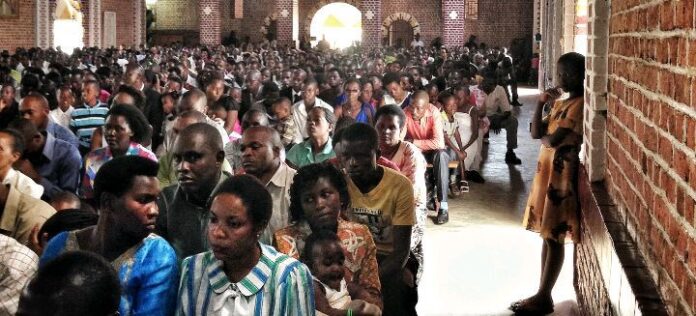On a summer afternoon in 1994, David Guttenfelder took a taxi from the Rwandan capital Kigali to the nearby region of Bugesera. He walked inside the Ntarama Church and began taking photographs of people who had been murdered by their neighbors. They had come to the small, red-brick church from all over the area seeking refuge—just as their parents and grandparents had come in the past when violence broke out between the ethnic majority Hutus and minority Tutsis. But this time the church, like many others in Rwanda during the genocide, became a killing ground.Thousands of bodies—old men and women, young men and women, boys and girls, toddlers and infants—filled the entire sanctuary. “People piled on top of one another, four or five deep, on top of the pews, between the pews, everywhere,” he said.Outside, the grounds were overgrown, and victims lay where they had fallen. “People had been hacked to death and left slumped against trees. I remember one woman with her underwear pulled down lying on the ground. You didn’t have to be a detective to see how people were killed,” he said.
RECENT POSTS
Breaking: Oprah Winfrey is Pissed, Books Tickets to Leave the USA After Recently Announcing...
Oprah Winfrey, the media mogul and beloved cultural icon, has sparked a firestorm of speculation with her recent, unexpected moves.
In the last few days,...
James Van Der Beek, 47, reveals in a emotional interview that he has been...
James Van Der Beek has colorectal cancer, PEOPLE can confirm.
“I have colorectal cancer. I’ve been privately dealing with this diagnosis and have been taking...
Michael Jordan issues furious response after fake Donald Trump ‘endorsement’ went viral
Michael Jordan’s representatives have strenuously denied that the NBA legend has endorsed Donald Trump ahead of this week’s presidential election.
On the eve of the...
Jason Kelce breaks silence on Travis and Taylor Swift phone smash after police launch...
Jason Kelce is being investigated by police for smashing a fan’s phone on Saturday – with the NFL hero breaking his silence on the...
Sofia Vergara defines her relationship with new boyfriend Justin Saliman in a strange way:...
Sofia Vergara has not yet dared to admit that she has something special with Dr. Justin Saliman, with whom she has been romantically linked...
NFL Update: Patrick Mahomes Mourns the loss of another Chiefs Team Mate after tough...
Kansas City Chiefs quarterback Patrick Mahomes voiced his frustration and disappointment following the injury of another key teammate during the recent game.
This latest setback...
“Confirmed: Game over for the Chiefs. The NFL has officially suspended the Kansas City...
In a shocking turn of events, the NFL has officially suspended the Kansas City Chiefs, marking a significant moment in the league’s history.
The decision...
UPDATE: NFL legend Tom Brady welcomes a newborn baby with his secret partner, Kim...
In a surprising turn of events, NFL legend Tom Brady has welcomed a newborn baby with his secret partner, Kim Kardashian.
The announcement has sent...
BREAKING NEWS: Travis Kelce Faces Heartbreak as His $6 Million Mansion Goes Up in...
In a shocking turn of events, Kansas City Chiefs star Travis Kelce is grappling with a devastating loss as his $6 million mansion was...
JUST IN: Taylor Swift has been urgently hospitalized after battling a serious illness, prompting...
In at Sartling development, beloved pop superstar Taylor Swift has been rushed to the hospital following reports of a serious illness.
Fans and the music...
OMG! WATCH as Travis Kelce Shocks the World as He Arrives at Allegiant Stadium...
OMG! Travis Kelce Shocks the World as He Arrives at Allegiant Stadium with Girlfriend Taylor Swift in Convoy Before the Chiefs vs. Raiders Game
In...
JUST IN: Chiefs Coach Andy Reid Has a Direct Message for Taylor Swift and...
When asked about the romance and Swift’s presence at the games, Reid said to People, “She’s got a great guy she’s dating right now,...
















